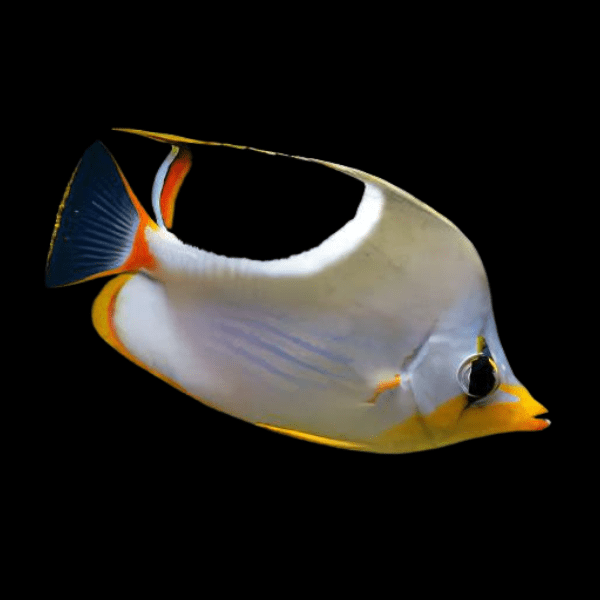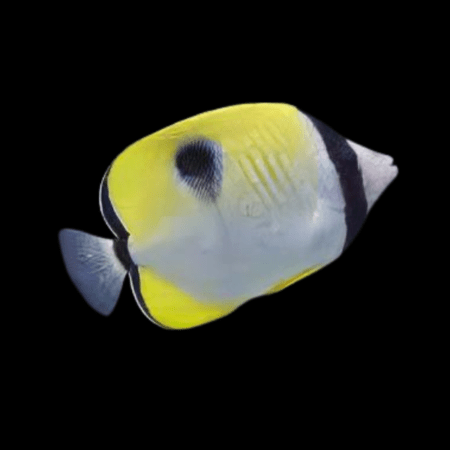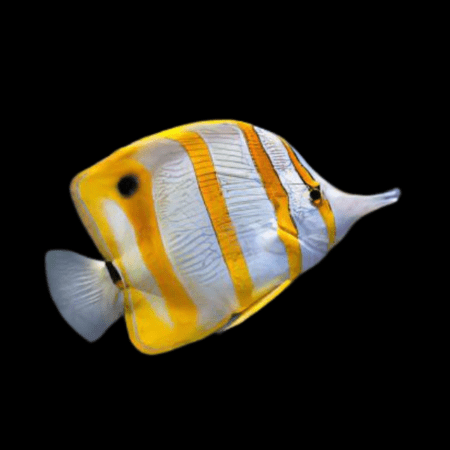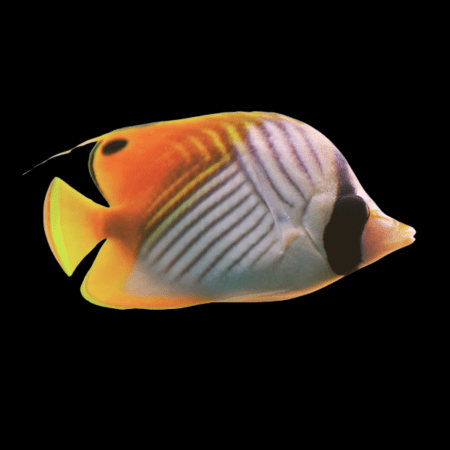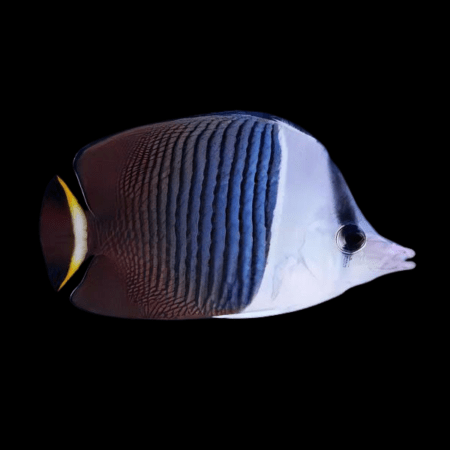Description
Saddleback Butterflyfish Chaetodon Ephippium
The Saddleback Butterflyfish, with its vibrant colors and unique patterning, is a captivating addition to marine aquariums. Distinguished by its large dark patch or “saddle” across the back and a brilliant orange body, this species is not only visually striking but also exhibits fascinating behaviors that can enchant both novice and experienced aquarists.
Origin
Native to the Indo-Pacific region, Chaetodon Ephippium thrives in coral-rich lagoons and outer reefs. These environments, ranging from the coast of East Africa and the Red Sea to the islands of the central Pacific, provide the complex habitats necessary for their survival.
Feeding
Saddleback Butterflyfish are omnivores with a preference for coral polyps, invertebrates, and algae. In aquarium settings, their diet should be varied, including marine flakes, frozen and live foods like mysis shrimp, and marine algae to ensure proper nutrition and health.
Tank Mates
Choosing tank mates for the Saddleback Butterflyfish requires careful consideration. They do best with other peaceful fish and can cohabit with larger, non-aggressive species. It is advisable to avoid housing them with small, aggressive fish or those that nip fins. Compatibility with other butterflyfish varies; they can be territorial towards conspecifics unless introduced simultaneously or in a sufficiently large tank.
Aggression
Generally peaceful, Saddleback Butterflyfish can exhibit territorial aggression towards their kind or similar-looking species. They’re best kept singly or as a mated pair in home aquariums to minimize stress and aggression.
Experience Level
Caring for Saddleback Butterflyfish demands an intermediate level of marine aquarium knowledge. Their specific dietary and environmental needs require attention to detail and a commitment to maintaining high water quality and a stable environment.
Water Parameters
- Temperature: 75-82°F (24-28°C)
- pH: 8.1-8.4
- Specific Gravity: 1.020-1.025
- Alkalinity: 8-12 dKH
These fish thrive in well-established aquariums with plenty of live rock for grazing and hiding. A minimum tank size of 75 gallons is recommended to provide ample swimming space and to accommodate their need for a complex, enriched environment.
